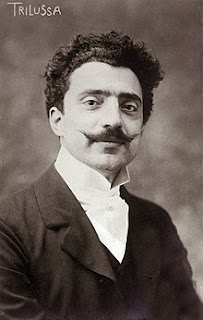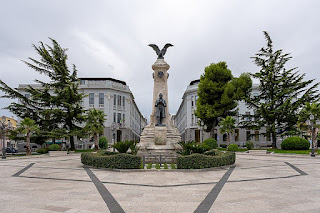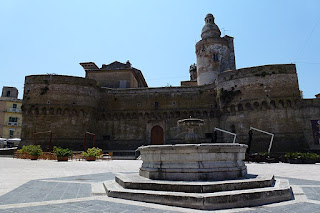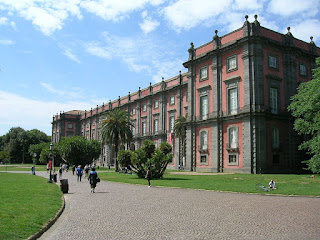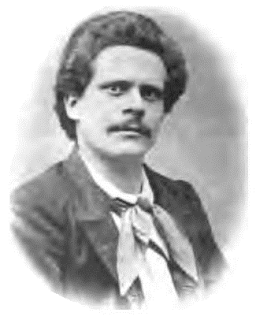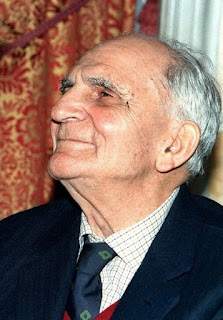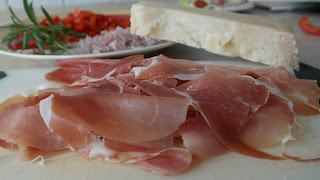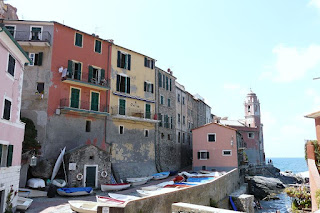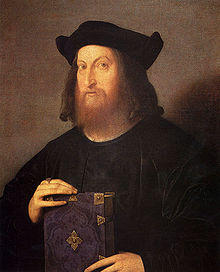Patriotic writer was inspired by victory against the Turks
 |
| Da Filicaja earned comparisons with the great poet Petrarch |
Da Filicaja’s six celebrated odes inspired by a famous battle victory led to scholars placing him on a level with some of the greatest Italian poets.
He was also a respected politician and was named governor of Volterra and Pisa by Cosimo III, the Grand Duke of Tuscany, who later appointed him to serve in the Tuscan Senate.
Born into an aristocratic family in Florence in 1642, Da Filicaja was educated by Jesuits before going to Pisa University to study law. In Pisa, he was inspired by the historical associations he saw that were linked with the former glory of the republic of Pisa.
The banners and emblems of the Order of St Stephen, which had its seat in Pisa, had great significance for the young student, who knew that the navy of this military order, created by Cosimo I de’ Medici, formed the main defence of his country and its commerce against Turkish, Algerian and Tunisian corsairs.
After returning to Florence, Da Filicaja married Anna Capponi in 1673, the daughter of a senator and marquis, and he went to live in the Tuscan countryside, where his main interest was writing Italian and Latin poetry.
 |
| Da Filicaja earned comparisons with the great poet Petrarch |
Other scholars and writers he met there, such as the poet Francesco Redi, helped him to gain access to Medici court patronage.
Da Filicaja’s imagination was fired by the deliverance of Vienna from the Turks in 1683 and he composed six odes to celebrate the victory. Redi showed Da Filicaja’s verses to his own royal patron and sent them to the foreign princes whose noble deeds were praised in them. The quality of Da Filicaja’s odes celebrating the victory of John III Sobieski in the Battle of Vienna is what made many scholars consider him to be on a level with some of the greatest Italian poets.
Christina, the ex Queen of Sweden, contacted Da Filicaja from her exile in Rome, offering to pay for the education of his two sons and to keep the generous gesture a secret. And in 1691, Da Filicaja became a member of the Academy of Arcadia, a literary academy founded in Rome.
Cosimo III made the poet the commissioner of official balloting and governor of Volterra, where Da Filicaja tried to improve public morality. He was also made governor of Pisa in 1700 and he became so popular that when he left office the inhabitants of both cities petitioned to have him brought back.
Cosimo III made him a Senator in Florence, where he spent the last years of his life. After he died, at the age of 64, he was buried in the family vault of the Church of San Pietro in Florence and a monument was erected in his memory in the Basilica di Santa Croce in the city by his only surviving son, Scipione Filicaja.
.jpg) |
| The Palazzo della Carovana, which was built by Vasari for the Knights of St Stephen |
Pisa’s most popular tourist attraction by a long way is the Campo dei Miracoli, site of the famous Leaning Tower, which features a beautiful Romanesque cathedral and an equally impressive baptistry. For many visitors, the Campo dei Miracoli is all they come to see, yet there is much more to Pisa than the Leaning Tower. The University of Pisa remains one of the most prestigious in Italy, while the student population ensures a vibrant cafe and bar scene. There is also much to see in the way of Romanesque buildings, Gothic churches and Renaissance piazzas. Interesting churches include Santa Maria della Spina, which sits next to the Arno river, while Piazza dei Cavalieri is notable for the Palazzo della Carovana, built by Giorgio Vasari in 1564 as the headquarters for the Knights of St Stephen.
_-_Facade.jpg) |
| The magnificent facade of the Basilica di Santa Croce, a Florence highlight |
The Basilica of Santa Croce, consecrated in 1442, is the main Franciscan church in Florence and the burial place among others of Michelangelo, Galileo, Machiavelli, the poet Ugo Foscolo, the philosopher Giovanni Gentile, the composer Gioachino Rossini and the nuclear physicist Enrico Fermi. It houses works by some of the most illustrious names in the history of art, including Canova, Cimabue, Donatello, Giotto and Vasari. The construction of the current church, to replace an older building on what was once marshland outside the city wall, began in 1294, paid for by some of the city's wealthiest families. It is the largest Franciscan church in the world. The floorplan is an Egyptian or Tau cross - a symbol of St Francis - 115 metres in length with a nave and two aisles separated by lines of octagonal columns, with 16 chapels. It stands proudly over the Piazza Santa Croce, one of the most famous and beautiful squares in the city.
Also on this day:
1501: The birth of doctor and mathematician Girolamo Cardano
1934: The birth of Princess Maria-Pia of Bourbon-Parma
1954: The birth of footballer Marco Tardelli
1955: The birth of businessman Ricardo Illy
